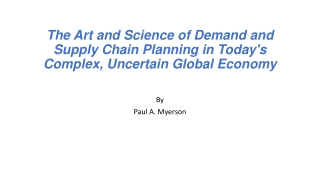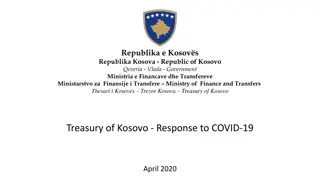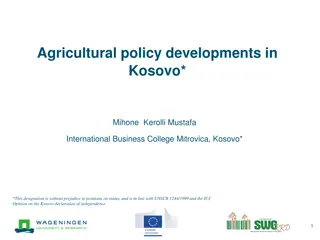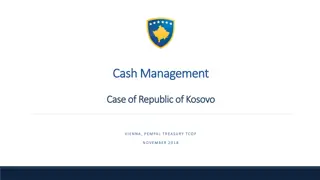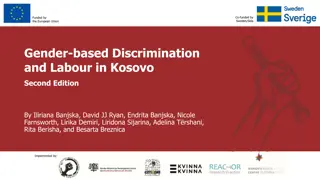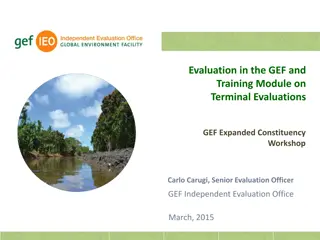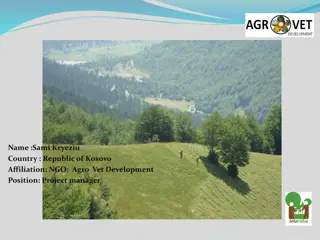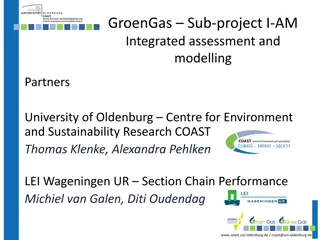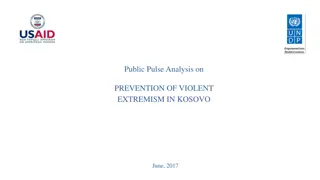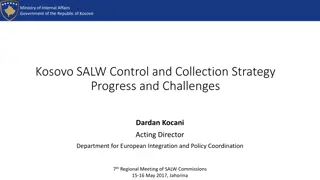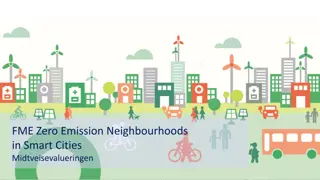Power Supply Options for Kosovo: Development and Evaluation
This background paper from the Conference on Sustainable Energy for Kosovo delves into the development and evaluation of power supply options for Kosovo. It covers the study approach, power demand forecast methodology, assumptions, and estimated supply to meet forecast power demand, emphasizing the importance of forecasting energy consumption and implementing sound policies for sustainable energy solutions in Kosovo.
Download Presentation

Please find below an Image/Link to download the presentation.
The content on the website is provided AS IS for your information and personal use only. It may not be sold, licensed, or shared on other websites without obtaining consent from the author. Download presentation by click this link. If you encounter any issues during the download, it is possible that the publisher has removed the file from their server.
E N D
Presentation Transcript
Development and Evaluation of Power Supply Options for Kosovo: A Background Paper Conference on Sustainable Energy for Kosovo Pristina May 14, 2013
The Options StudyApproach Approach Demand forecast Supply options Alternative power supply plans Comparison of costs (incl. environmental and health costs) Sensitivity analysis 2
Kosovos Electricity Consumption is Low by Regional and International Standards 3
Power Demand ForecastApproach Power demand should reflect the average economic cost of electricity, including the costs of the local environmental impacts of power supply (such as pollution). We need to forecast required energy to be supplied, which is derived from forecast of energy consumption + energy losses in the power system Estimated power supply needed to meet forecast power demand to 2025 in following steps: Two forecast cases derived: Base case forecast; and Low case forecast 4
Power Demand ForecastMethodology A simple model that relates future power consumption to: Future retail price of power; and Future level of overall consumer income, indexed to GDP Price and Income are linked to demand: Price elasticity of minus 0.20 (minus 0.4 for non-technical loss reduction) Income elasticity of plus 1.31. This means for example that a 10 percent increase in the price of power would reduce consumers demand for power by 2 percent; and that a 10 percent increase in GDP would increase consumers demand for power by 3.1 percent. This simplified approach used due to lack of good quality data necessary for a conventional approach. 5
Power Demand ForecastAssumptions An average annual price increase of 4.2 percent is assumed to reach full economic cost by 2025. For the base case demand forecast, income is projected to increase at 4.5 percent annually, based on IMF s average projected growth rate for Kosovo s GDP over the period 2012 to 2016. For the low case, the projected growth of GDP reduced to a 3.0 percent average annual rate. 6
Estimated Supply to Meet Forecast Power Demand Technical losses projected to fall steadily from 16.6 percent in 2010, 13 percent in 2015, 10 percent in 2020, and 8 percent in 2025. Non-technical losses projected to fall from 20 percent in 2013 to 5 percent in 2018, and to stay at 5 percent up to 2025. This approach and assumptions results in the following forecast annual average growth rates for the required energy supply between 2011 and 2025 Base case: 4.6% Low case: 2.9% These assumptions reflect the adoption of sound policies and actions by the government. 7
Demand ForecastRequired Energy Supply 8
Demand-Supply GapEnergy 5,600 GwH 3,600 GwH 5,300 GwH Kos B Existing Small Hydro Kos A 9
Demand-Supply GapPeak Demand 1,500 MW 1,100 MW 950 MW 1,200 MW Kos B Existing Small Hydro Kos A 10
Supply OptionsRenewables Large hydro: 305 MW Zhur plant could be built by 2017 to serve demand peak demand, but provides only 425 GWh (16% capacity factor). Small hydro: 18-20 sites with about 60 MW capacity total. Capacity factor of 53%. Wind: Few areas with speeds that make it commercially viable. Biomass and biogas: Biomass from forestry products and residue a possible source of distributed (not grid connected) generation; manure-based biogas from livestock a possible source of distributed lighting and heating Solar PV: Studies have identified potential of roughly 80 MW, but at very high cost. Geothermal: 2008 EC report found that soil and water temperatures too low for electricity generation. 11
Supply OptionsFossil Fuels Lignite: Sibovc mine has enough lignite to supply Kosovo A, B, and KRPP to the end of their operational lives. Natural Gas: Kosovo does not have gas resources or a gas transmission system. Timing of gas import is highly uncertain. Fuel Oil: All liquid fuels would have to be imported. 12
Supply Options Key Concepts for Cost Comparison Levelized energy cost (LEC): The sum of costs, per unit of electricity generated by a plant, over the plant s lifetime. Such costs include: Construction costs Operating and maintenance costs Cost of capital All costs are discounted to present day dollars. Note: We use economic and not financial cost. Economic analysis is concerned with costs to economy or society as a whole, not only costs to investor. Externalities: Costs created by the power plant that are not incurred by the plant owner/operator but instead are incurred by other "third" parties. Study accounts for the costs of negative externalities: The global and local environmental and health consequences of the thermal plant options. Carbon prices have recently registered a decline and are about 3/tonne in ETS, but this study assumes medium-term price rises: 15/tonne in 2010, 23/tonne by 2025, and 26/tonne by 2030. This study assumes local negative externalities equal to 3.50/MWh 13
Supply OptionsLevelized Energy Cost Comparisons Lignite plant is lowest cost fossil fuel option at higher levels of utilization Table below compares costs of all plants at low (20%), moderate (60%), and high (90%) levels of utilization Low (20%) Moderate (60%) High (90%) /kWh Lignite 0.18 0.09 0.08 Only capable of 16% utilization Zhur Hydro 0.08 Only capable of 53% utilization Small Hydro 0.12 Only capable of 20% utilization Wind 0.11 CCGT (natural gas) 0.14 0.10 0.09 Fuel Oil 0.20 0.17 0.16 14
Alternative Power Supply PlansApproach LECs are useful for comparing one plant to another, but not for selecting the least cost power supply plan. A different approach is needed. Evaluates alternative power supplyplans. A supply plan is a multi-year sequence of new generating plants designed to meet forecast demand. Criteria for the alternative plans: Balance annual consumption and generation to 2025 Allow system to meet peak demand without excessive reliance on imports RE capacity should be cost-competitive with thermal options, including externalities RE plants have priority dispatch (their energy is used first, before thermal) 15
Alternative Power Supply Plans Each alternative has an RE package and a fossil fuel option Alternative fossil fuel plants 600 MW lignite plant (2x300 MW) 575 CCGT natural gas plant 575 CCGT light fuel oil plant RE package same for each alternative supply plan: 305 MW Zhur plant 60 MW small hydro 250 MW wind 20 MW biomass 70 MW biogas 16
Lignite + RE Plan for Filling Demand- Supply Gap Imports KRPP Kos B Generation from RE=14% in 2020, 18% in 2025. Kos A 17
Lignite + RE Plan for Filling Demand Supply Gap Peak Demand Imports KRPP Kos B 395 MW of new RE capacity installed but only ~170 MW can be used to reliably meet peak Zhur Kos A 18
Alternative Power Supply Plans Conclusion Lignite is the power supply of choice even under scenarios substantially different from the most likely scenario Lignite is competitive with gas even if: Demand grows at only 2.9% per year (instead of 4.6% as in the base case forecast) The forecast cost of CO2 is higher by 55% The construction cost of the lignite plant is higher by 25% Lignite prices increase by 70% Gas prices decrease by 15%. 19
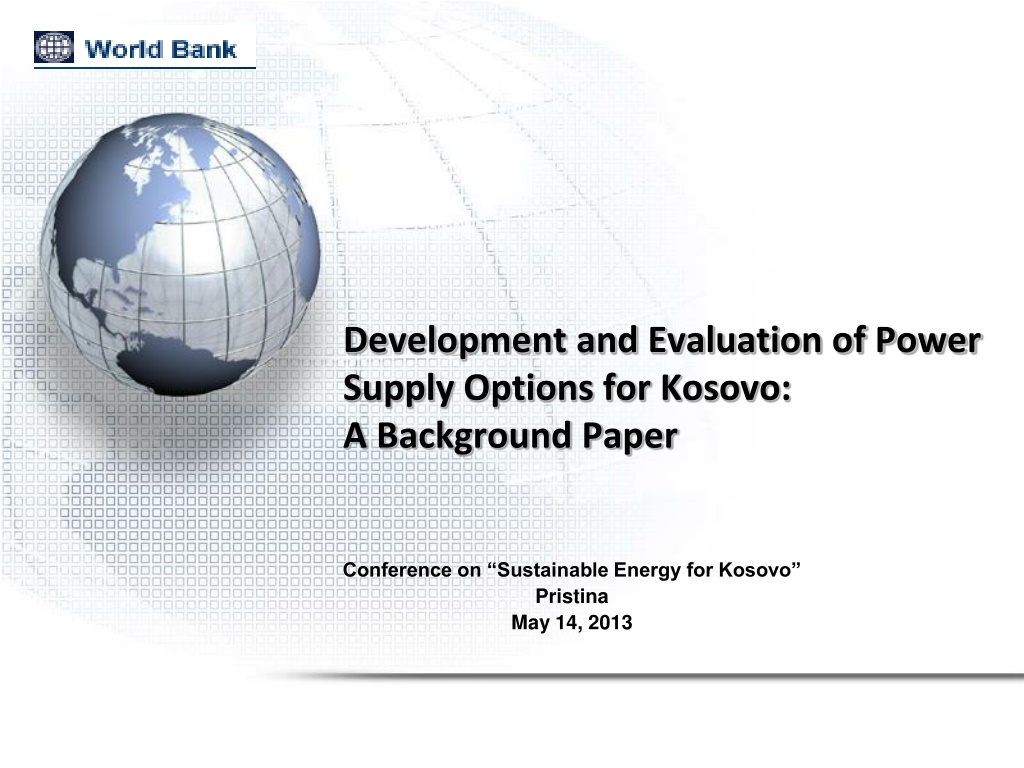
 undefined
undefined



